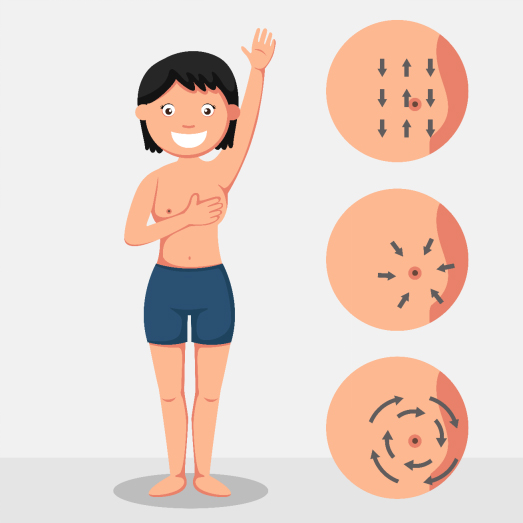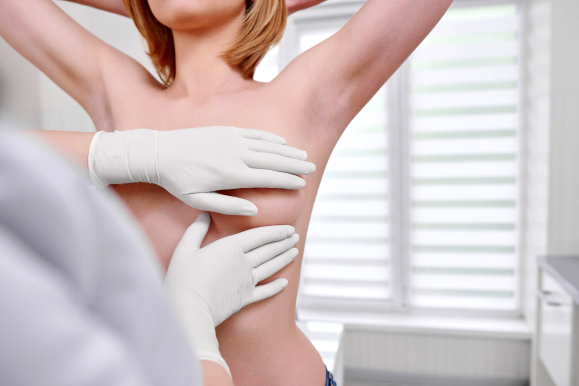
Author Name: Dr. Aditi Agarwal (M.S. General Surgeon), F.M.A.S., F.I.A.C.R.S.I., P.G.D.M.C.H., F.I.A.G.E.S. Breast Colorectal & Laparoscopic Surg.
Breast cancer is one of the most common cancers in women and the numbers are constantly on the rise. It is treatable and has very high success rates, but it is important that it is detected in the early stages.
Breast cancer symptoms vary widely, from no visible symptoms to severe changes like a big lump in the breast, or discharge from the nipple. Some of the most common signs to look out for are:

The importance of performing a breast examination at home:
How to perform a breast examination at home?

Start with a visual inspection in front of the mirror: Raise your arms high overhead and look for any changes in the shape, size, and asymmetry. Watch out for any swelling, dimpling or puckering of the skin, or changes in the nipples. There can be a minor difference between the right and the left breast, but anything major needs to be evaluated by a professional.
Next, we will go for tactile or the touch and feel examination: National Breast Cancer Foundation recommends tactile examination be performed in standing and lying down, both the positions.
Lastly, look for any discharge. Squeeze the nipple with firm pressure, and check for any kinds of discharge coming out from either of the breasts. The American Cancer Society recommends that every woman should examine her breasts once a month starting at 20 years of age. The breast self-examination should ideally be performed one-week post menstruation for better accuracy.
Make sure you follow a pattern to ensure that both the breasts are covered completely. If you find any abnormality, promptly get it checked by the doctor.
When should I consult a professional?
Professional screening can help you to detect cancer before you feel any signs and symptoms. It is widely agreed that all women over 40 years of age should have annual breast examinations by a health care professional. Women who have a family history are at a high-risk for breast cancer should ask their healthcare professional, about when to start the screening process and how often to get it done. The most common tests and procedures used to diagnose breast cancer include:

Other advanced procedures like Breast MRI and CT scan are performed depending on the situation.
(P.S.- Breast cancer in males is a rare occurrence, but it is good to perform self-examination on a regular basis)
If you have any questions regarding this topic, do let us know. We’re happy to help!